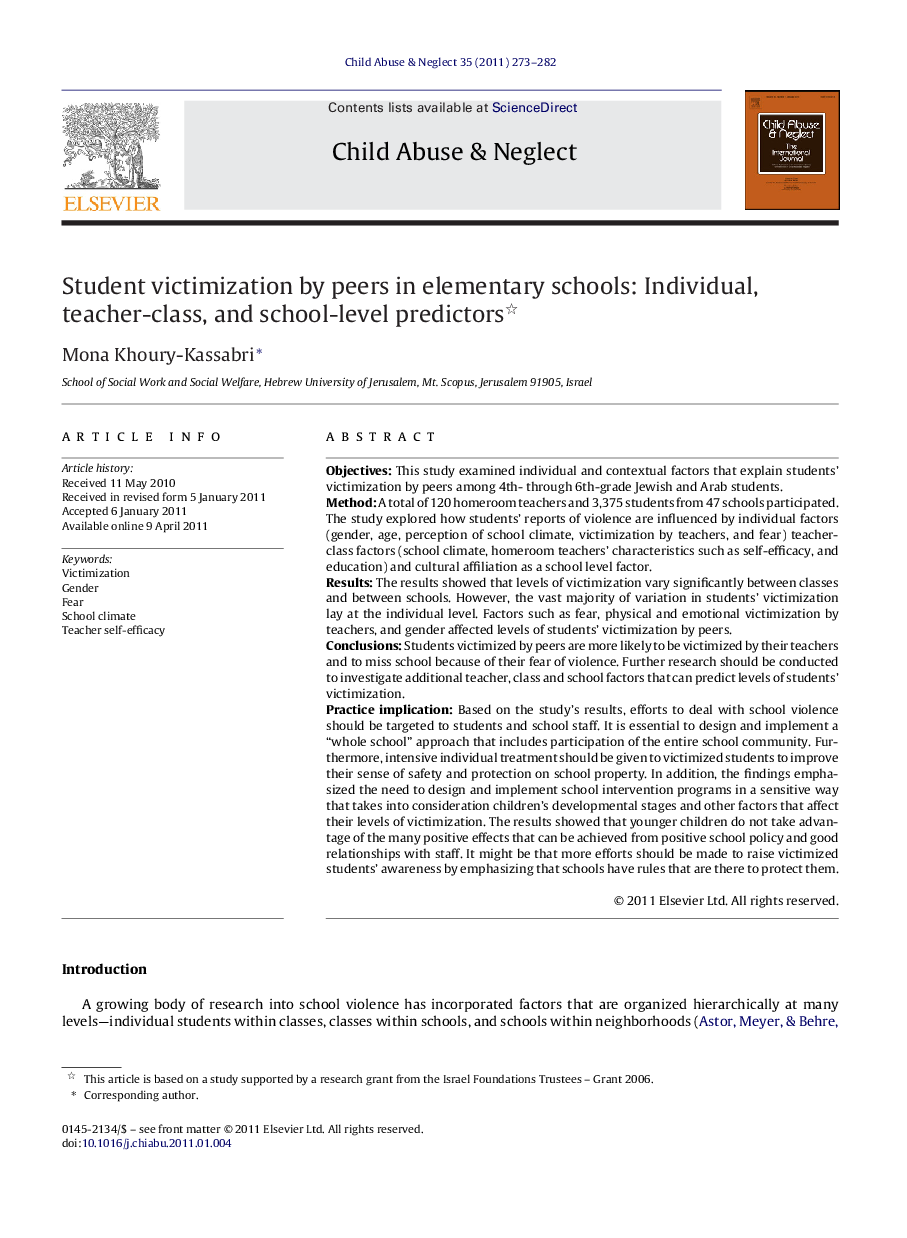| کد مقاله | کد نشریه | سال انتشار | مقاله انگلیسی | نسخه تمام متن |
|---|---|---|---|---|
| 345379 | 617512 | 2011 | 10 صفحه PDF | دانلود رایگان |

ObjectivesThis study examined individual and contextual factors that explain students’ victimization by peers among 4th- through 6th-grade Jewish and Arab students.MethodA total of 120 homeroom teachers and 3,375 students from 47 schools participated. The study explored how students’ reports of violence are influenced by individual factors (gender, age, perception of school climate, victimization by teachers, and fear) teacher-class factors (school climate, homeroom teachers’ characteristics such as self-efficacy, and education) and cultural affiliation as a school level factor.ResultsThe results showed that levels of victimization vary significantly between classes and between schools. However, the vast majority of variation in students’ victimization lay at the individual level. Factors such as fear, physical and emotional victimization by teachers, and gender affected levels of students’ victimization by peers.ConclusionsStudents victimized by peers are more likely to be victimized by their teachers and to miss school because of their fear of violence. Further research should be conducted to investigate additional teacher, class and school factors that can predict levels of students’ victimization.Practice implicationBased on the study's results, efforts to deal with school violence should be targeted to students and school staff. It is essential to design and implement a “whole school” approach that includes participation of the entire school community. Furthermore, intensive individual treatment should be given to victimized students to improve their sense of safety and protection on school property. In addition, the findings emphasized the need to design and implement school intervention programs in a sensitive way that takes into consideration children's developmental stages and other factors that affect their levels of victimization. The results showed that younger children do not take advantage of the many positive effects that can be achieved from positive school policy and good relationships with staff. It might be that more efforts should be made to raise victimized students’ awareness by emphasizing that schools have rules that are there to protect them.
Journal: Child Abuse & Neglect - Volume 35, Issue 4, April 2011, Pages 273–282